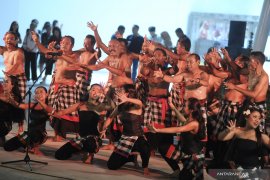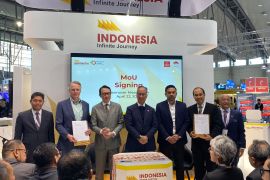The proposal of Balinese dances, Papua`s Noken and the Beautiful Indonesia in Miniature Park (TMII) for inclusion in UNESCO`s Best Practices on Indigenous Knowledge 2011 was announced by TMII Director of Operation Ade Meliala during the Pesona Budaya Indonesia 2011at TMII, East Jakarta, on Sunday (April 17).
The Pesona Budaya Indonesia (Indonesian Fascinating Culture) 2011 was attended by Badung Regent Anak Agung Gde Agung, Badung Regency Secretary Kompyang R. Swandika and some other officials and members of
Badung Regional Legislative Assembly (DPRD).
Some Indonesian representatives of UNCESO also attended the cultural event which highlighted some Balinese dances, such as Sekar Jepun, Oleg Tamulilingan and opera-like dance Jayantaka Pratidnya.
Meliala said that the Indonesian cultural features, notably Balinese dances, deserve the appreciation from global communities for their excellence as indigenous cultural heritages. "Let the world know how TMII has been functioning as an institution to preserve the Indonesian culture," she said.
Anak Agung Gde Agung, who represented the Bali governor in the event, welcomed the initiative of the Indonesian government to propose Balinese dances to UNESCO for the status of the world body`s Best Practices on Indigenous Knowledge 2011.
Balinese dances deserve the status because of their exquisite and unique artistic values, said Anak Agung Gde Agung. He hoped that UNESCO would grant the status of Best Practice on Indigenous Knowledge.
Located in East Jakarta, the 250-hectare TMII is a culture-based recreational park and is a synopsis of Indonesian culture, with virtually all aspects of daily life in Indonesia`s 34 provinces encapsulated in separate pavilions with the collection of architecture, clothing, dances and traditions.
Noken is a very versatile bag in a form of nets made from tree skin and used by Papuans to keep their belongings
when they go out hunting, gardening or shopping.
(B005/O001)
Editor: Aditia Maruli Radja
Copyright © ANTARA 2011










